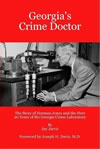All Articles
Accident Investigation & Reconstruction
Gems & Jewelry
Alcohol, Tobacco & Other Drugs
Healthcare Facilities - Hospitals
Aquatics Safety
Insurance Coverage Analysis
Archaeology - Archeology
Investigation & Surveillance
Architecture
Land Use
Audio Forensics
Laws & Procedures
Banking
Life Expectancy - Life Care Planning
Chemical Industry
Linguistics
Computer Forensics
Marine - Maritime
Computers
Mediation
Construction
Medical Malpractice
Cosmetology: Hair / Makeup
Obstetrics - Gynecology (OBGYN)
Counseling
Pain Management
Crime Scene Investigation
Patents
Digital Forensics
Pharmaceuticals
Economics
Plants & Trees
Elder Abuse
Pools and Spas (Recreational)
Elevators - Escalator - Automatic Doors
Premises Liability
Energy - Utilities
Product Liability
Engineering
Professional Malpractice
Enterprise Resource Planning (ERP)
Psychiatry
Environment
Real Estate
Finance
Sexual Abuse - Molestation - Harassment
Food & Beverage
Toxicology
Forensic Psychiatry
Warnings & Labels
More...

MEDICAL-PAGE ARTICLES MAIN PAGE
. Contact Us if you are interested in having your work published on our website and linked to your Profile(s).
All Articles
Accident Investigation & Reconstruction
Human Factors
Accident Prevention & Safety
Human Resources
Alcohol, Tobacco & Other Drugs
Industrial Hygiene and Safety
Appraisal & Valuation
Insurance
Attorney Fees
Land Mapping - Surveying - Zoning
Biokinetics
Law Enforcement
Child Witch Phenomenon
Linguistics
Computer Forensics
Machinery
Counseling
Manufacturing
Design
Marine - Maritime
Discovery & Electronic Discovery
Medical Malpractice
Documentation Examination & Analysis
Mining
Education & Schools
Nursing
Electrical - Electrocution
OSHA
Energy - Utilities
Patents
Engines (Combustion - Diesel)
Pharmaceuticals
Environment
Politics
Eyewitness Testimony
Premises Liability
Fires & Explosions
Professional Skills
Food & Beverage
Psychology
Foot / Ankle Surgery
Radiology
Forgery & Fraud
Real Estate
Gems & Jewelry
Spirituality
Healthcare
Taxation
Healthcare Facilities - Hospitals
Workplace Violence
More...
Featured Articles
There are no active articles here at this time. Please use the search bar, try another category, or contact us if you would like to contribute an article.
This Article is unavailable. Contact Us
Search articles by title, description, author etc.
Sort Featured Articles
Featured resources
Peacemaking: Practicing at the...
by Douglas E. Noll, Esq
Georgia's Crime Doctor
by Jay Jarvis
The Architect's Standard of Care: A...
by Christopher D. Ling, AIA, et al
Follow us










